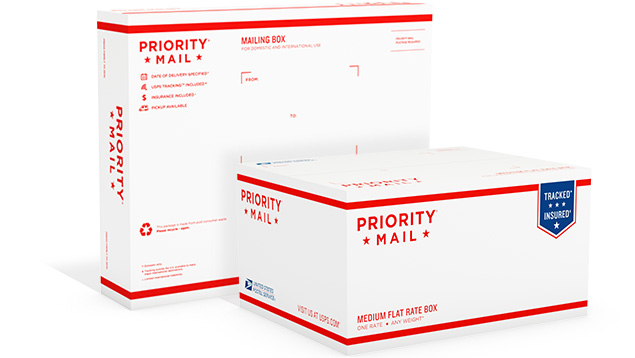Setting Up Social Media as a Board Game Dev: A Primer Course
You probably found me through Twitter. I have data that says so. My first game, War Co., succeeded because of social media. As I write this, I have over 10,000 followers between the War Co. and blog Twitter accounts and over 25,000 followers on Instagram.
Looking for more resources to help you on your board game design journey?
Here you go: no email required!
Like this writing style?
Check out my latest blog on marketing here.
I didn’t go to any cons. I didn’t go to any stores. I didn’t have a Board Game Geek account until last year. In fact, I knew very little about modern board games until last year. The passion I felt in my heart led me to design War Co., which introduced me to this thriving, wonderful board game community that I would have otherwise never known about.

Social media didn’t just pay for my dreams. It also taught me everything I needed to know. It put me in touch with incredible people, brought articles to my attention, and told me which games were good to buy.
I know how powerful social media is and I know how to use it. In fact, I’m even a published researcher on the subject of viral marketing. That’s why I’m writing this guide. I’m going to tell you how to use social media effectively for your board game project.
Setting up Social Media: Before You Speak Your First Word
If you sign up for Twitter or Instagram or some other social media site to promote your game, you probably want to get a ton of followers. Getting a ton of followers is hard, time-consuming work – there’s no way around this. However, you can make your life much easier if you start out looking professional. Professionalism isn’t about the size of your team or your number of followers. It’s about clarity of purpose, attention to detail, and consistency.

Step 1: Choose your message
You probably have a rough idea of what you want to say. You need to have a good idea of who you are, what you are trying to say, and what you want people to do. It’s amazing how many people fail at this. Open up Twitter and look at random people’s bios. They rarely tell you much about the person.
People know my name is Brandon Rollins. I don’t hide behind the brand name of War Co. People know I’m a game developer, people know I like sci-fi, and people know I want them to buy my game (wink, wink). Clarity is vital.
Step 2: Choose your audience
I couldn’t sell War Co. in a nursing home. No one would care. A kindergarten class won’t listen to your advice on 401(k) investing allocations. A big-city liberal Democrat would have a hard time engaging in political discourse in the Appalachian region of Tennessee.

Point is: your message needs to resonate with your audience. Choose your audience wisely. If you can’t choose your audience, change your message until it works for them.
Step 3: Choose your platforms and learn them
There’s dozens of social media sites out there, but here’s the big ones: Facebook, Twitter, Instagram, YouTube, Snapchat, Reddit, Pintrest. The list goes on and on. Figure out where your audience hangs out. For board game devs, you’ll find people on all of these, but some communities are better than others. Do your homework. This is always changing.
Don’t just pick a platform and get started, though! Observe how people communicate. Read, watch, and listen. Take note of what the most influential people do. Learn what all the settings and buttons and switches do. Figure out the mindset of your audience on each particular platform and customize your message. You don’t want to come across as tone-deaf – that’s where a lot of big companies fail. People don’t often want to be sold to.

Once you know how a platform works, get set up. Use great photos and make sure your page looks professional.
Is this thing on? – What to Say After Setting Up
Step 4: Build a backlog
The first thing you should do once you are set up on social media is post regularly for a couple of weeks. Don’t worry about anything else. Just use the platform for a couple of weeks to build up a backlog of material that people will see when they find you.
Step 5: Start talking to others
Once you’ve got a couple of weeks behind you, it’s time to start engaging people directly. This comes in a lot of different forms. You can follow people who you think would be interested in you. You can comment on other people’s material. You can make prudent use of hashtags on applicable platforms. The goal here is to become visible.
….Just don’t be a weirdo who goes on other people’s pages and says “check out my page!” That’s dumb. A lot of well-meaning people totally blow it by doing that.

This takes time. This is the elbow grease you need to succeed. Keep at it. Your first 1,000 followers are the hardest to get. Then you start gaining people organically (read: without gritty, hands-on work). I find that once you reach 10,000 people on most platforms, people starting coming to you. Even when you reach 10,000, you will still need to engage people directly. Plus you will have added difficulties on top of that. I’ll get to that in the next section.
Have real conversations with people every single day when you’re starting out.
Iterate. Change your approach. Find the right way to talk to people. You won’t get it right in the first month or even the first year. I’m still learning, changing, and growing every day and I’ve got nearly 40,000 people between all my channels. (I’ll give you a little hint, though. People love images.)
Going Viral – Advanced Social Media Techniques
After a couple of months, you’ll probably feel like you’ve got your feet under you. Now it’s time to move on to more advanced tactics.
Step 6: Schedule, Automate, and Outsource
You’ve probably noticed by now that staying on top of social media is kind of a pain in the ass. You don’t have to be online all the time. You can actually come up with posts in batches and schedule them throughout the week with software like Hootsuite and Iconosquare. Even if you have to pay for some of this software, it’s often worth the money.
Some people even go so far as to automate following, unfollowing, liking, and even commenting. Be careful with stuff like that. Read the Terms of Service of your platforms before you do anything like that. I personally do not automate my accounts with bots. Many people do. It’s your call. Be considerate and ethical.
Alternatively, all the things you might choose to automate, you can simply outsource to employees or freelancers through sites like Fiverr. I don’t do this either, but I’ve thought about it. Point is, if you feel yourself buried under grit, that’s a sign that you need to give the dull stuff to someone else and focus on what you do best.
Step 7: Gather Data
Most platforms have robust tools that gather data on your posts and people’s reactions to them. Facebook has Insights and Twitter has Analytics. Instagram recently started gathering data as well (but it’s frankly annoying to parse on a mobile device, which is how you have to access the network for the most part). Oftentimes, you can export and save this data to look at in Excel, where you can do heavy analysis.
Step 8: Tweak Your Message
With or without spreadsheets, though, you can benefit a ton by looking at what people like. Twitter Analytics let me know which of my “War Machines Company” jokes were getting liked and retweeted and which ones were falling flat. Iconosquare’s data for Instagram let me know what people like to see on Instagram (mostly art with a clear object in focus with a lot of intricate detail).
With the data I gathered, I started changing up my style. My social media channels had been stagnant for a little while, but reacting to data about my social media dramatically improved engagement – likes, retweets, etc.
Post more of what people want to see, but stay true to your overall message. Continue to iterate your approach, just like you would a game when you’re developing it.
This is a high-level walk-through. Every site you use is different and specific advice is very time-sensitive. I haven’t even covered paid advertising!
If you have specific questions or comments about your social media plans, I’d love to respond in the comments.












